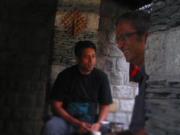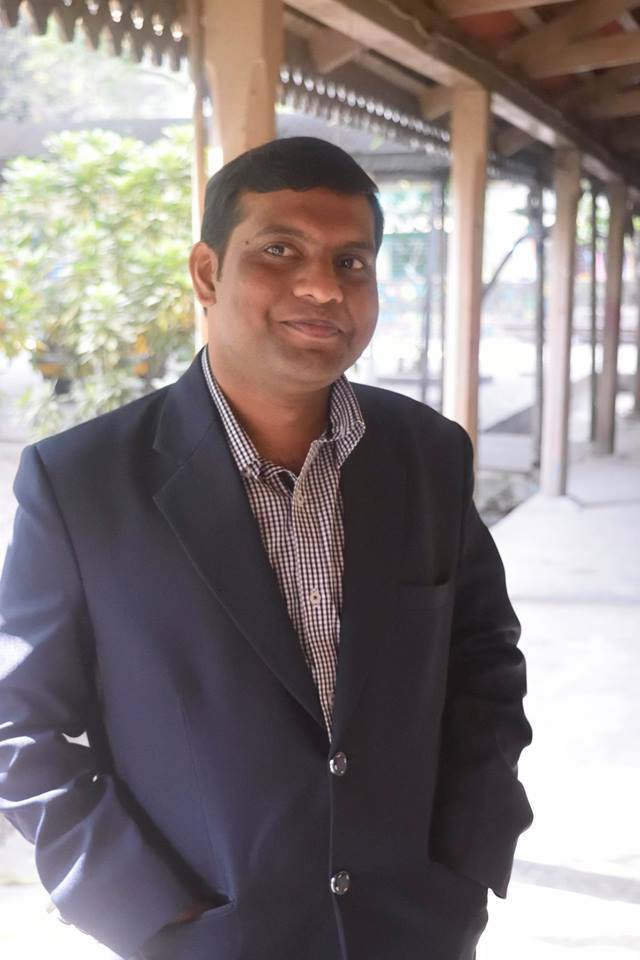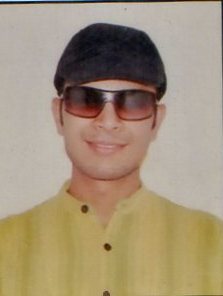Hany Babu
 Introduction
Introduction
The way in which certain classes of people including Dalits, Adivasis, Minorities and the disabled persons are made invisible or marginalised in the mainstream discourse has been often talked about. Mainstream discourse also pays scant attention and there is hardly any public outrage when Dalit students are driven to suicides in the so-called premier institutions, when extreme caste atrocities are unleashed on Dalits and Adivasis, when tribals and minorities are raped, killed or are subjected to prolonged incarceration under the pretext of national security. However the recent controversy regarding the derecognition of the Ambedkar Periyar Study Circle (APSC) in IIT Madras has been successful in raising an outrage. For instance, an online petition regarding this was able to gather more than 7500 signatures in less than a week’s time. While this could be read as the result of an increasing acceptance of the issues of the marginalised sections of the society, there may be another dimension to this sudden turn of events.
This piece is an attempt to decipher the sudden public outrage caused by events like the derecognition of the Ambedkar Periyar Study Circle as opposed to caste atrocities or discrimination. The claim made is that the public outrage is generated only when a certain kind of rights get violated. At one level, we could think that it is when the rights of the dominant groups are violated that the public outrage is generated. However, the outrage against the derecognition of the APSC belies this. In order to understand this phenomenon, a distinction between the kinds of rights guaranteed by the Constitution of India is made use of, and a connection is drawn between the kind of right that gets violated and public outrage. In a nutshell, one can say that our Constitution guarantees certain rights to all “persons” and certain others only to “citizens” – the former being of a more basic type that are available to all human beings as opposed to the latter.
It is argued that “public outrage” is generated when the rights guaranteed to the citizens are violated. The dominant sections see themselves as “citizens” and they do not – as a class – get affected by violations of the rights that are of a more basic type. As a class, it is only the marginalised sections that get affected by the more basic type of rights. Or in other words, a Dalit or a Muslim will get discriminated or be the victim of arbitrary action by virtue of being a member of the class of Dalits or Muslims, but a right like freedom of expression gets violated not by virtue of being a member of any specific class (like Dalits or Muslims), but by virtue of being a member of the class called “citizens”. Violations of basic fundamental rights remain a problem of the marginalised. Therefore, discrimination and arbitrary actions against these “marginal citizens” do not invoke the same kind of outrage.
Rights of Citizens and Noncitizens
Among all the fundamental rights guaranteed by the Constitution of India, the right to “equality” (Article 14), “right to freedom” (Article 19), and “protection of life and liberty” (Article 21) have been held to be the most important of all. For instance, in their usual grandiloquent style, the judges of the Supreme Court said in the celebrated Minerva Mills‘ case that these three articles of our Constitution “stand between the heaven of freedom into which Tagore wanted his country to awake and the abyss of unrestrained power.” However, all these three rights are not on an equal footing. While “equality before law” and “protection of life and personal liberty” are available to persons (i.e. all individuals regardless of their nationality), protection of rights regarding freedom are available only to “citizens”.
Discriminating between citizens and noncitizens in terms of rights is a well established practice. The usual explanation given to this kind of distinction is that rights that affect all persons are of a more basic type as they are available to everyone by virtue of their being human beings, while the rights that are available only to citizens are of a higher order. However, countries differ with respect to which of the rights are available to citizens and which ones are available to noncitizens (See for instance Cole (2003), “Are Foreign Nationals Entitled to the Same Constitutional Rights As Citizens?” available at: http://scholarship.law.georgetown.edu/cgi/viewcontent.cgi?article=1302&context=facpub)
US Constitution is claimed to accord political freedom to noncitizens, apart from the protection of due process and equal protection. In contrast, the Constitution of India, does not permit the state to infringe on the life and personal liberty of citizens as well as noncitizens “except according to procedure established by law” (Article 21). Equality and equal protection of law is also guaranteed to citizens as well as noncitizens. However, Article 19, which embodies the rights regarding freedom of speech and expression, right to assemble, to form associations, to move freely throughout the territory of India, to reside and settle in any part of the territory and to practise any profession, occupation, trade or business, is applicable only to citizens.
Equality for equals and unequals
Arbitrariness and discrimination have been held to violate equality. The concept of equality is enshrined in Articles 14, 15, and 16 of the Constitution. While 14 is available to all persons, 15 (equality in education) and 16 (equality in employment) are available only to citizens. The concept of equality clause has been tempered with justice in accordance with the dictum “equals should be treated equally and unequals unequally”. Therefore, in order to attain equality, reservation in education and public employment for sections of citizens classified as socially and educationally backward is justified on the basis of such unequal treatment in order to attain equality.
The dominant groups, however, have always resisted the struggle to attain equality through reservations, even when there is overwhelming empirical evidence showing how caste is a factor of backwardness in India. When there is state action in the form of reservation in order to give full effect to Articles 14, 15 and 16 of the Constitution, there is widespread indignation and resentment in the upper caste media, almost giving the impression that reservation is the only reason why our society cannot get rid of caste. The hue and cry and public outrage is more often than not against the implementation of reservation as witnessed during the agitations of Mandal I (when reservation for the Other Backward Classes was introduced in employment) and Mandal II (when it was introduced in education).
On the other hand, when there is gross violation of reservation policy as in the case of the IITs or Central Universities like the University of Delhi, which is the violation of the equality class enshrined in Articles 14, 15, and 16, there is a deafening silence in the media or in the public sphere. There are very few voices crying hoarse about the violation of one of the most fundamental rights of the Scheduled Castes, the Scheduled Tribes, the Other Backward Classes, or the Persons with Disabilities to be treated as equal in terms of educational or employment opportunities. There is hardly any outrage when an instance of discrimination against a Dalit student that leads to suicide is reported (see for instance the story by Anoop Kumar http://roundtableindia.co.in/index.php?option=com_content&view=article&id=6271:the-death-of-anil-meena&catid=129:events-and-activism&Itemid=195) .
Even the Court is quite often too wary about reservation, stopping short of quashing it but asserting that reservation is only an enabling provision in spite of the majority view in Indira Sawhney‘s case and many other judgments that followed that reservation is mandated by the equality clause in Article 16(1) of the Constitution and not merely as an exception under the special provision of Article 16(4). Whether the Scheduled Castes, Scheduled Tribes and Other Backward Classes should get equality of treatment is still an open question for the dominant interest. In fact, in the judgment quashing the order on reservation for Jats, the Supreme Court even talks about “emerging forms of backwardness” implying that caste should not be the relevant factor any more (Ram Singh v Union of India).
Right to life and personal liberty
Violations of Articles 14 and 21 are non issues when it comes to the rights of Dalits, Adivasis, Muslims or Persons with Disabilities. When the rights to life and personal liberty of the Dalits, Adivasis, Muslims, Kashmiris or the people of North East are trampled upon by the State through police atrocities or caste violence and rape, a similar silence can be experienced. Most often there is no outrage or public hue and cry beyond the appearance of some matter of fact newspaper reports. When procedure established by law is made a mockery of by using the draconic provisions of the Armed Forces Special Powers Act or the Unlawful Activities (Prevention) Act and hundreds of Tribals, Kashmiris or Muslims are killed or incarcerated for years or on end, or a disabled person like GN Saibaba is made to suffer the most inhuman torture in the notorious anda cell in Nagpur prison, there is hardly any outrage visible.
Freedom and outrage
Outrage is reserved for violations that have a potential to affect the dominant classes. In fact this has been noticed in the contrasting reactions to the Nirbhaya rape case and the scores of rape cases of Dalit women in Haryana and Muslim women in Muzaffarnagar.*
In the article titled “Protests in Delhi and the nationalist paradigm,” Jenny Rowena, drawing a connection between the protest against the Nirbhaya rape case and the nationalist paradigm of the uppercaste formations argues that “the upper castes have always used to imagine themselves through the nationalist paradigm. It is this which will work to establish them as the most valid, visible, political subjects of the Indian nation and allow them to carry on with their dominance over it.” (http://roundtableindia.co.in/index.php?option=com_content&view=article&id=6138:the-protests-in-delhi-and-the-nationalist-paradigm&catid=119:feature&Itemid=132). It is this imagination (and thereby visibility) of the uppercaste “citizen” as the bearer of rights like freedom of expression as opposed to the invisibility of the marginalised people and their basic rights that gives rise to the outrage when rights of one kind get violated and the silence when rights of another kind get violated.
A similar outrage was also noticed during the controversy regarding the Ambedkar cartoon in the NCERT textbook. In that context, Dalit Bahujan groups by and large held the view that the cartoon insulted Ambedkar and therefore should be removed. However, the mainstream discourses held on to the view that freedom of expression and thought should not be compromised. The privileged obviously are beyond being threatened by thought or expression. It is only the oppressed people or the rabid fringe right that is going to ask for gagging certain kinds of expressions. The liberal uppercaste conscience is never threatened by anybody’s freedom of expression, and therefore they get outraged every time there is a threat to their freedom. Even the Courts seem to be extra vigilant when it comes to protecting freedom of expression. The recent judgment in which the Supreme Court struck down Section 66A of the Information and Technology Act, 2000, holding that it is violative of Article 19 (1) (a) of the Constitution (i.e. freedom of speech and expression) is a case in point.
Conclusion
The contention raised is that “public outcry” is reserved for such infringements of freedom of expression and thought because the privileged class reacts or responds only when there is a potential threat of an infringement of its freedom. This is not to belittle or denigrate the support that protests like the one against the derecognition of the Ambedkar Periyar Study Circle has been able to muster. On the contrary, it is to highlight the fact that only certain kinds of violations are suitable subjects that can raise a public outcry.
It is not surprising that the pie of rights is cut as those that are available to all persons and those that are available only to citizens. The rights that are available to all are of a more basic type and they are supposed to protect all persons from arbitrariness and discrimination. As a class only the marginalised segments are subjected to these in many walks of life, be it education, employment or protection from arbitrary arrest, incarceration or encounter deaths. The perils of being treated unequally or being deprived of life or personal liberty is the exclusive privilege of the marginalised people. There is no scope for public outcry as the marginalised are not recognised as full citizens. In so far as equality is concerned, the dominant groups are outraged when their privileges are threatened and clamour for “formal equality” and not for proportional or egalitarian equality, which protects the marginalised sections. Right to freedom of expression, on the contrary, affect only citizens. When that is encroached upon, the “citizens” get outraged. When the more basic rights of the oppressed classes get violated, they draw indifference as these classes are not yet full “citizens”. Even their rights are not equal.
~
*See, for example, http://roundtableindia.co.in/index.php?option=com_content&view=article&id=7461:bhagana-haryana-rape-victims-warn-hudda-against-inaction&catid=129&Itemid=195) and
http://roundtableindia.co.in/index.php?option=com_content&view=article&id=6902%3Adaughters-raped-in-front-of-mothers-muzaffarnagar-riots-victims-too-afraid-to-report-to-police&catid=61%3Aopinion&Itemid=56.
~~~
Hany Babu teaches in the Department of English, Delhi University, and is Secretary, Academic Forum for Social Justice.










